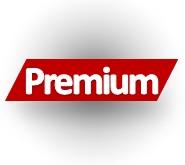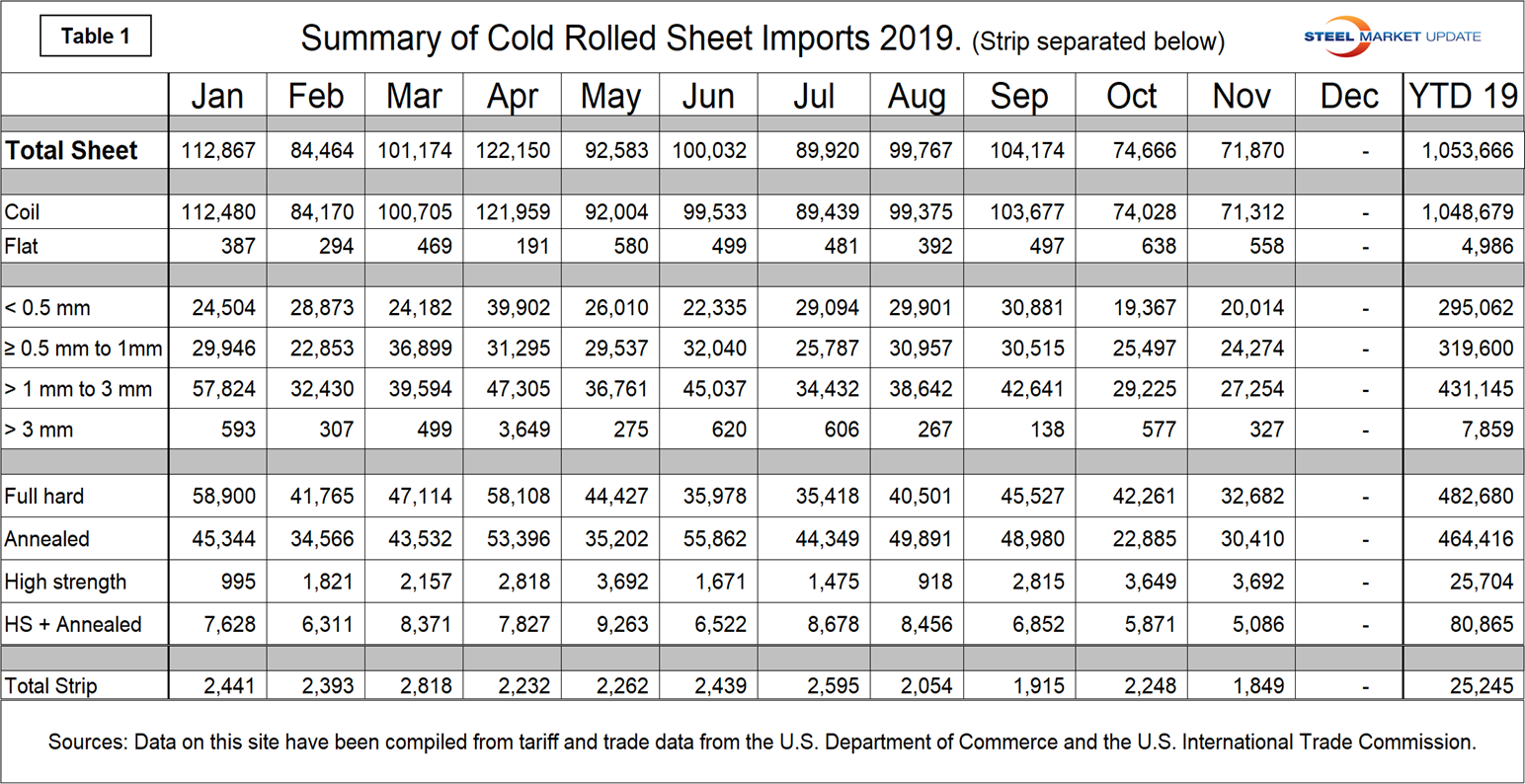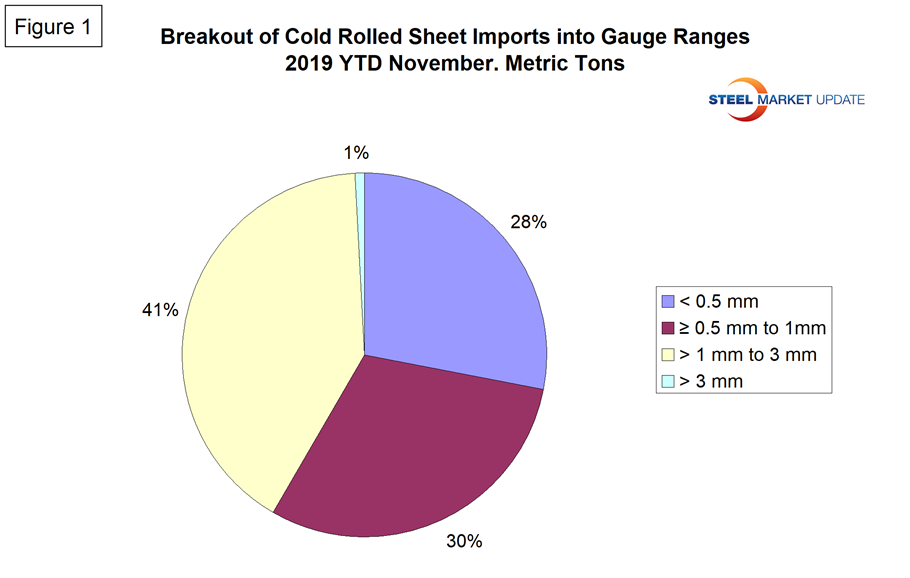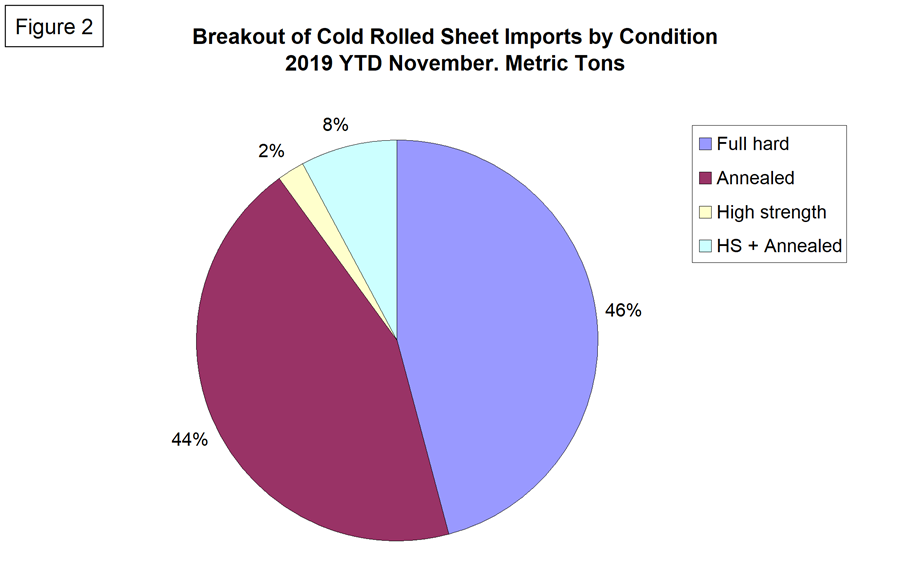SMU Data and Models

Drill Down of Cold Rolled Imports into Product Detail
Written by Peter Wright
January 13, 2020
Using U.S. International Trade Commission (USITC) data, Steel Market Update has taken the import tonnage of cold rolled sheet and broken it down into coil and leveled, then our report breaks out four thickness ranges and identifies how much was full hard, annealed and high strength.
Through November 2019, of the total cold rolled sheet and strip imports into the U.S., only 2.4 percent was strip. By gauge range the sheet broke down to: 28.0 percent < 0.5mm, 30.3 percent ≥ 0.5 to 1.0 mm, 40.9 percent> 1 to 3mm thick and 0.7 percent > 3 mm.
Table 1 is a summary for 2019 through November of cold rolled imports showing gauge ranges and condition and the annual year-to-date total for sheet. Strip is itemized separately at the bottom of the table. Both are in metric tons.

Figure 1 breaks the year-to-date cold rolled sheet tonnage down into the four gauge ranges that are identified in the HTS codes.

Figure 2 does the same thing for condition. It identifies the volume of full hard, annealed, high strength and high strength annealed. Year to date November, 45.8 percent was full hard, 44.1 percent was annealed, 2.4 percent was high strength and 7.7 percent was high strength annealed.

Note: This data was accessed through the USITC database. All steel traded globally is classified by the Harmonized Tariff System (HTS). The HTS code has 10 digits. The first six are globally universal. The last four are used at the discretion of the nations involved in a particular transaction and are the basis of this report. The way the U.S. uses the last four digits to define products may be different from other nations’ product classification.

Peter Wright
Read more from Peter WrightLatest in SMU Data and Models

SMU Scrap Survey: Sentiment Indices rise
Both current and future scrap sentiment jumped this month, though survey participants reported responses before key trade news was announced.

SMU Survey: Sentiment splits, buyers have better view of future than the present
SMU’s Steel Buyers’ Sentiment Indices moved in opposite directions this week. After rebounding from a near five-year low in late June, Current Sentiment slipped again. At the same time, Future Sentiment climbed to a four-month high. Both indices continue to show optimism among buyers about their company’s chances for success, but suggest there is less confidence in that optimism than earlier in the year.

SMU scrap market survey results now available
SMU’s ferrous scrap market survey results are now available on our website to all premium members. After logging in at steelmarketupdate.com, visit the pricing and analysis tab and look under the “survey results” section for “ferrous scrap survey” results. Past scrap survey results are also available under that selection. If you need help accessing the survey results […]

SMU flat-rolled market survey results now available
SMU’s latest steel buyers market survey results are now available on our website to all premium members. After logging in at steelmarketupdate.com, visit the pricing and analysis tab and look under the “survey results” section for “latest survey results.” Past survey results are also available under that selection. If you need help accessing the survey results, or if […]

SMU Survey: Sheet lead times stabilize, plate contracts
Mill lead times for sheet products were steady to slightly longer this week compared to our late June market check, while plate lead times contracted, according to steel buyers responding to this week’s market survey.
